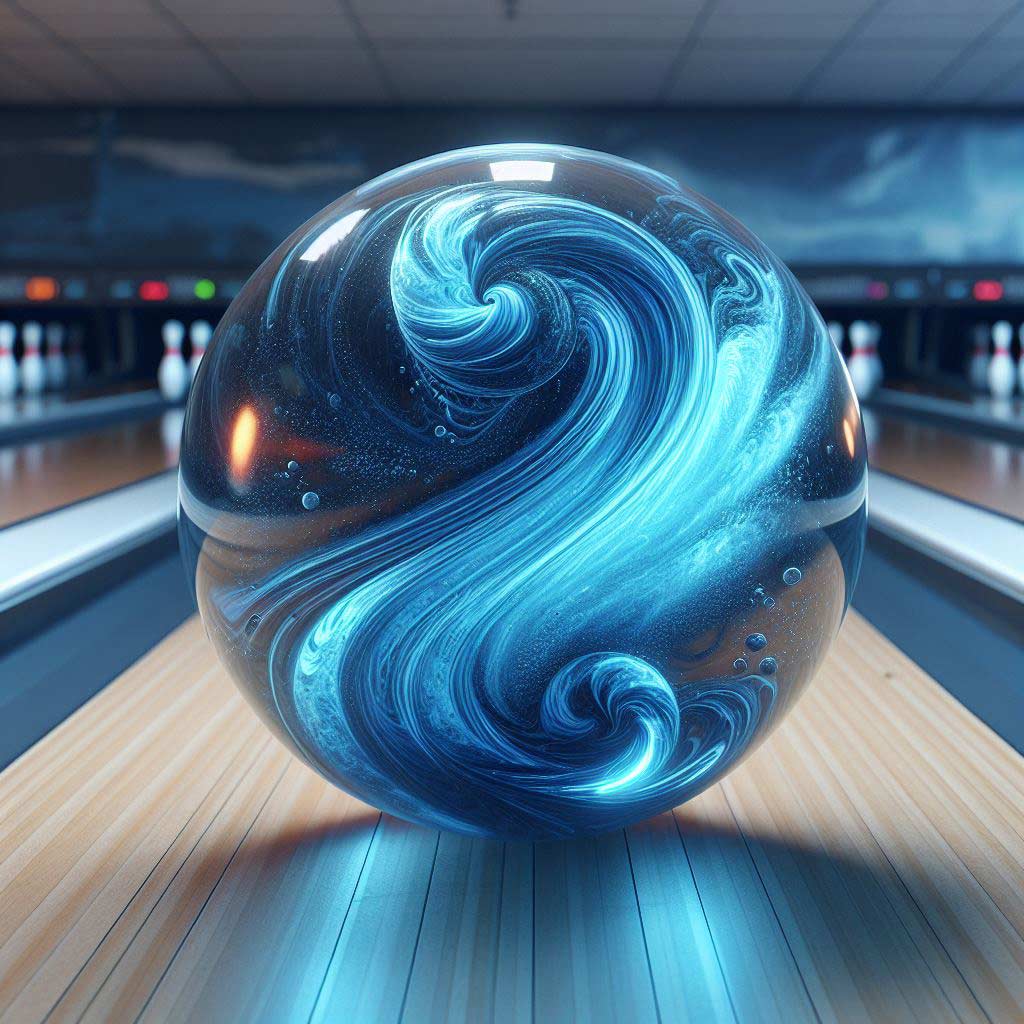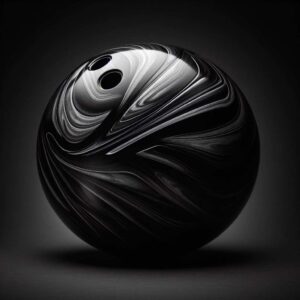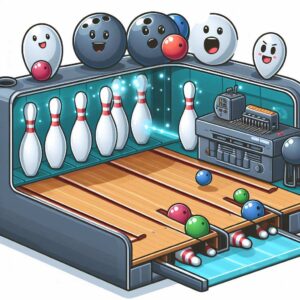For many casual bowlers, the myth that bowling balls contain liquid in their centers has persisted for decades. The idea of a sloshing interior adds an air of mystery and sophistication to these spheres of resin and rubber.
However, the truth about what actually lies at the core of a modern bowling ball is far more fascinating than any urban legend. This article will explore the realities of bowling ball construction while debunking the liquid center myth once and for all.
What is the Purpose of a Bowling Ball’s Core?
At its essence, the core of a bowling ball is the engine that powers its performance on the lanes. This dense inner component plays a crucial role in determining many of the ball’s key motion characteristics. The core’s design influences critical factors such as:
- Weight Block: How the ball’s total weight is distributed, with a higher percentage towards the core creating a higher “weight block” that can increase hitting power.
- Differential Rate: The difference in radius of gyration between the core and outer cover, impacting the ball’s overall flare potential and hook off the dry boards.
- Overall Ball Motion: Whether the ball exhibits an earlier or delayed transition in its roll, as well as length and backend hook off the pattern.
For competitive bowlers, precisely matching their bowling ball’s core dynamics to their individual delivery style is vital for achieving optimal ball motion and striking power.
The Myth of Liquid-Filled Bowling Ball Centers
Despite its widespread popularity, the notion that bowling balls contain liquid-filled centers is simply false. Not only would a liquid interior completely undermine the ball’s performance, but it’s also structurally impractical from an engineering standpoint.
The liquid center myth likely originated from people misinterpreting the somewhat sloshing sounds that can occur when rolling certain balls at high speeds.
However, these audible liquid-like effects actually emanate from interactions between the core and its internal materials shifting or outer cover flexing temporarily upon release.
In reality, filling the core of a high-performance ball with any kind of liquid would be catastrophic for ball motion. A true liquid center would severely dampen any desirable core dynamics like differential flare potential.
It could also potentially cause hazardous cracking or explosive failures due to the compressed fluid expanding under the intense forces of ball delivery and impacts.
Actual Bowling Ball Core Construction
Rather than a liquid-filled center, modern bowling balls utilize meticulously designed and engineered solid cores constructed from specialized materials. Common core constructions include:
- Polyester Cores: An affordable and durable option, polyester provides decent core dynamics for entry-level balls aimed at straighter roll patterns.
- Wood Cores: Though less common today, many older balls used dense wood like maple or pine to establish a firmCore base weight.
- Rubber Cores: With greater flexibility than wood or polyester, rubber allowed for improved weight transfer and ball dynamics compared to rigid cores.
In today’s high-performance bowling balls, reactive resin cores have become the premier option. These dense spheroid cores are typically formed through an intricate molding process using proprietary materials and fillers by each manufacturer.
The key advantages of reactive resin cores include:
- Concentrated Mass Bias: Resin cores can be manufactured with specific densities, weight blocks, and mass bias (side, finger/top, thumb/top weighting) to create desired motion characteristics.
- Dynamic Differential Potentials: With differential rates up to 0.060″ or more between cover and concentrated resin core materials, reactive resin balls can achieve dramatically higher hook potential compared to other core types.
In essence, reactive resin cores allow ball engineers to carefully construct dense internal weight blocks and differentiated mass bias that facilitates optimal weight transfer, revs, length, and backend responsiveness – all key ingredients for generating maximum scoring potential on modern energy-depleting lane conditions.
Benefits of Different Core Designs
Not all bowling ball cores are created equal. Manufacturers can produce an incredibly diverse range of specific core designs and geometries that cater to different release styles and desired ball motions. At a high level, cores generally fall into two main categories:
- Symmetrical Cores: With uniform geometry and balanced mass distribution, symmetrical cores provide highly predictable and controlled ball motion ideal for players with straighter release styles. Common symmetrical shapes include spheroid pancake, cylinder, and triangle cores.
- Asymmetric Cores: Featuring uneven mass distributions, weight blocks, and geometries, asymmetric cores help generate significantly more track flare and hook in the backend for players looking to maximize revs and ball motion off drier outside line. Popular asymmetric cores include oval, semi-spherical, and aviar(bird-wing) shapes.
Within those broad categories, manufacturers can tweak virtually every aspect of a core’s geometry, including its overall size, contours, intermediate and outer radius dimensions, materials, and precise weight blocking distributions.
Even subtle nuances in a core’s engineering can translate to meaningful differences in how smoothly or quickly it revs up, reads friction, clears midlane, and dynamically transitions at the backend.
For example, a larger, more geometrically compact core will typically rev up earlier but retain more energy through the midlane for later downlane motion.
In contrast, a smaller circumferential core allows the coverstock to take on a larger percentage of the ball’s overall radius for clearance before the core’s mass dynamically forces a move on the backend.
By tinkering with a myriad of possible shapes, sizes, weight distributions, and materials, manufacturers can keep innovating unique core designs that open up new possibilities for matching any individual bowler’s specific performance needs and release characteristics.
Types of Bowling Ball Coverstocks
Of course, the core is only half of the technological equation powering a bowling ball. The other critical component is the ball’s coverstock – the outer shell material that enables the core’s energy to be properly stored, channelled, and released for an optimal downlane motion.
Like cores, modern bowling ball coverstocks come in a variety of different engineered formulas designed to meet different needs and conditions:
- Solid Reactive Coverstocks: Made from solid reactive resins often blended with particle additives, these covers tend to be durable and provide good overall motion for most oil patterns. Popular particle additctions include glass, ceramic, and nano materials like metallic oxides and fullerenes.
- Pearl Reactive Coverstocks: Utilizing semi-translucent pearlized coverstock chemistry, pearl reactive balls provide more conservative midlane motion before quickly transitioning on the backend with amplified responsiveness on drier areas and friction. These tend to work well on medium-heavy volume patterns.
- Urethane Coverstocks: Though not as popular as reactive offerings, urethane bowling balls prioritize controlled backend motion and cleaner shape through the fronts. Urethane balls tend to work best on drier, mixed, or burnt up patterns.
- Plastic/Polyester Coverstocks: The most affordable and beginner-friendly coverstock, plastic maintains an ultra-straight trajectory with minimal ball reaction until initial friction on the backend. Optimal for heavier volumes of oil.
The specific coverstock a bowler utilizes must be carefully matched to their ball’s core characteristics, local lane conditions, oil volumes and patterns in order to generate their preferred ball motion and roll shape. Bowlers often own multiple balls with different coverstock formulas to combat diverse lane situations.
Matching Ball to Playing Style and Conditions
With such a vast array of core designs, coverstocks, weights, and differential potentials, the process of properly fitting individual bowlers with the right ball “recipe” has become highly meticulous and personalized.
Factors that influence ideal ball makeup:
- Rev Rate and Rotational Speed: Higher rev rates and ball speeds generally necessitate larger, more aggressive cores and coverstock combinations to optimize flare potential and backend traction on the drier boards.
- Ball Speed: Players with higher ball speeds often opt for larger core designs to better store and transfer that energy through the midlane before an angular backend motion. Slower speeds sometimes pair better with smaller cores.
- Release Style: For players with higher track flare and more leveraged release styles, asymmetric cores provide extra backend responsiveness. More upright or strokey players may prefer the controlled motion of symmetric cores.
- Lane Conditions: The ratio of oil volume to dry/burned areas hugely impacts ball choice. Heavier oil requires smoother, arced motions from polished solid coverages and milder differential cores. Drier lanes unlock the hooking capabilities of pearl covers and high differential asymmetrics.
With so many potential ball configurations, the process of finding the perfect fit involves a delicate balancing act. Pro shop professionals utilize detailed physical metrics like rev rate, ball speed, and tilt measurements combined with subjective assessments of a player’s footwork, timing, release, and body characteristics to prescribe an ideal whale drilling and ball makeup.
Even at the highest levels of the sport, the constant pursuit of that magical pairing between player and ball construction never stops. Manufacturers continually innovate new cores and coverstocks while elite athletes make tiny adjustments to their physical games – all in pursuit of squeezing out just a little more potentially game-changing ball motion.
Conclusion
While the myth of liquid-filled bowling ball centers makes for an amusing urban legend, the reality of modern ball engineering proves to be even more captivating.
From scientifically engineered reactive resin cores to nano-particle enhanced coverstocks, today’s high-performance offerings represent the avant-garde of sports equipment design.
At their core (no pun intended), bowling balls serve as marvels of distributed weight dynamics, material science, and precise manufacturing. The ability to strategically concentrate mass biases and differentiate radius of gyrations within a deceptively simple sphere is what allows these technological wonders to outperform anything conceived just decades prior.
More than just procedural details, understanding the intricate dynamics behind bowling ball construction unlocks a deeper appreciation for the talent and skill required to properly wield and capitalize on these finely-tuned instruments.
For as dialed-in as a ball’s core and cover formulas might be, optimizing that potential through the physical mechanics of footwork, timing, rev rate, and release is an art form in itself.
So while bowlers of all levels can now dispel the liquid center myth once and for all, they can also revel in the rich depth of genuine science and innovation powering the balls they toss down wood lanes in pursuit of that elusive perfect strike.
The beauty of the sport lies in masterfully uniting high-tech performance and natural human ability – a balanced synthesis of brain and brawn.
Whether looking to buy their first entry-level ball or experiment with the latest asymmetric core design, bowlers can find confidence in knowing that the truth behind what lies within those glossy spheres is more satisfying and astounding than any myth.
Liquid centers may engage the imagination, but the authentic genius of modern bowling ball engineering is what ultimately inspires true wealth and wonder.





